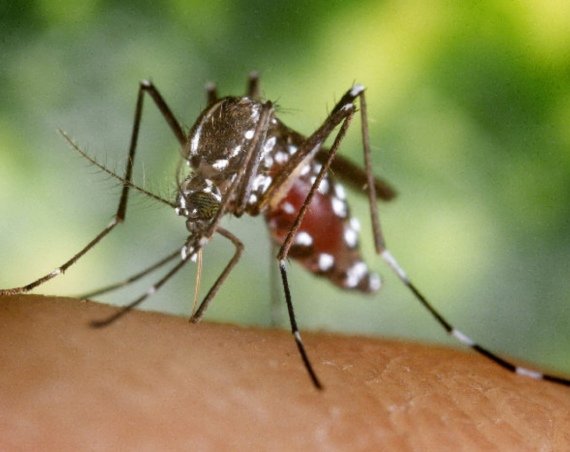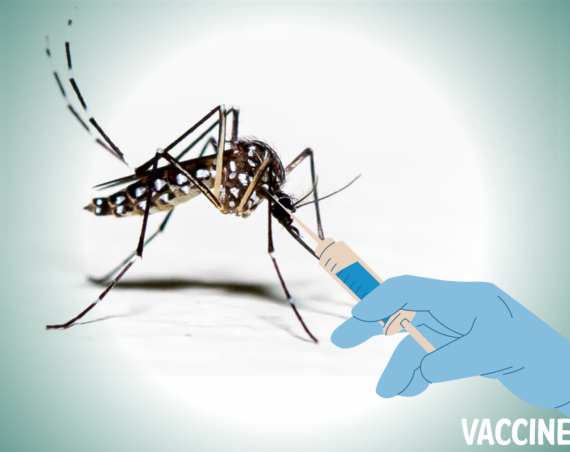Introduction
Dengue fever or dengue hemorrhagic fever is an acute mosquito-borne viral disease transmitted by female Aedes aegypti and Aedes albopictus mosquito. The dengue virus has four serotypes, namely DENV-1, DENV-2, DENV-3, and DENV-4. Every year nearly 100 million people get infected with dengue fever, and almost 40000 deaths are recorded. According to WHO, the number of positive cases of dengue fever globally has increased eight times over the last two decades. The mortality report of dengue reported to WHO between 2000 and 2015 has increased from 960 to 4032.
The risk of dengue exists in tropical and subtropical climates of Central America, South America, Africa, Asia, and Oceania. Long-term travelers and humanitarian workers who travel to locations where Dengue fever is prevalent are particularly vulnerable. Dengue fever can be found in urban and suburban areas, with transmission rates peaking during the rainy season. India has confirmed Dengue cases with cases reported from across the country. Dengue is endemic in India. Transmission occurs year-round in southern areas and from April through November in northern states.
This article provides an overview of dengue fever epidemiology in India. It begins with an overview of the early cases of dengue fever in India, followed by a population-based case study of the current dengue situation in India. Finally, the article presents the positive cases and mortality rates associated with dengue fever reported from 2015 to 2021.
Epidemiology of Dengue Fever in India
Dengue fever has been a problem in India since 1956 when the etiology was discovered by isolating DEN 2 from a six-year-old child’s serum in Vellore. In subsequent years the remaining three serotypes were isolated in India. The incidence of dengue from 1956-2010 with the responsible serotype presented by researcher G. Pandya in his article “ Prevalence of Dengue Infection in India” and Sakshi Srivastava et al. in their scientific article “ Dengue in India” is mentioned below in Table 1.
| Places in India | Year of Occurrence | Responsible dengue serotype |
|---|---|---|
| Vellore | 1956-1960 | DEN 1, DEN 2 |
| Vellore | 1961 | DEN 4 |
| Kolkata | 1963 | DEN 2 |
| Vishakhapatnam | 1964 | DEN 2 |
| Vellore | 1964 | DEN 2 |
| Nagpur | 1965 | DEN 4 |
| Madras | 1965 | DEN 3 |
| Jabalpur | 1966 | DEN 3 |
| Vellore | 1966 | DEN 3 |
| Asansol | 1967 | DEN 2, DEN 4 |
| Delhi | 1967 | DEN 2 |
| Vellore | 1968 | DEN1,DEN 2, |
| DEN3,DEN 4 | ||
| Kanpur | 1968 | DEN 4 |
| Kanpur | 1969 | DEN 4, DEN 2 |
| Ajmer | 1969 | DEN 1, DEN 3 |
| Gwalior | 1970 | DEN 3 |
| Bangalore | 1970-1971 | DEN 1, DEN 2 |
| Delhi | 1970 | DEN 2 |
| Hardoi | 1970 | DEN 2 |
| Jaipur | 1971 | DEN 1, DEN 2 |
| Jammu | 1974 | DEN 2 |
| Trichur | 1974 | DEN 2 |
| Kolkata | 1983 | DEN-3 |
| Jallore, Rajasthan | 1985 | DEN-3 |
| Delhi | 1988 | DEN-2 |
| Gujarat | 1988 | DEN-2 |
| Kolkata | 1990 | DEN-3 |
| Mangalore, Karnataka | 1993 | DEN-2 |
| Ludhiana | 1996 | DEN-1, DEN-2, DEN-3, and DEN-4 |
| Lucknow | 1996 | DEN-2 |
| Delhi | 1996 | DEN-2 |
| Rural Areas of Haryana | 1996 | DEN-2 |
| Delhi | 1997 | DEN-1 |
| Tamilnadu | 2001 | DEN-2 |
| Delhi and Gwalior | 2003 | DEN-3 |
| Tamilnadu | 2003 | DEN-3 |
| Delhi | 2003-2004 | DEN-3 |
| Delhi | 2003-2005 | DEN-1,DEN-2,DEN-3 |
| Kolkata | 2005 | DEN-3 |
| Delhi | 2006 | DEN-1 and DEN-3 |
| Delhi | 2002-2006 | DEN-1, DEN-2, DEN-3, and DEN-4 |
| Delhi and Gwalior | 2001-2007 | DEN-1 |
| Tamilnadu | 2007 | DEN-3 |
| Andhra Pradesh | 2007 | DEN-1 and DEN-4 |
| Ernakulam, Kerala | 2008 | DEN-2 and DEN-3 |
| Different parts of the country | 2003-2008 | DEN-3 |
| Delhi | 2007-2009 | DEN-1, DEN-2, DEN-3, and DEN-4 |
| Pune, Maharashtra | 2009-2010 | DEN-4 |
Table 1: Incidence of dengue Infection in India from 1956-2010
In a cross-sectional population-based or community-based serosurvey, an Indian team of researchers aimed to assess the age-specific seroprevalence, type of infection, and the number of dengue infections in India. The survey results were later published in the Lancet Journal in 2019. The study involved individuals of three age groups (5–8 years, 9–17 years, and 18–45 years) from each of the five geographical regions of India, namely north, east, west, south, and northeast. The researchers randomly selected three states from each geographical area. From each of these three states, four districts were established. Each of these districts was divided into four clusters. Two clusters represented the study population from rural wards and the other two from urban communities. Thus, the entire study involved 15 states, 60 districts, and 240 clusters. At the end of the screening, there were 4059 volunteers between 5-8 years, 4265 volunteers between 9-17 years, and 3976 volunteers between 18-45 years as participants, making the study’s total sample size 12300 volunteers. After getting approval from the ICMR’s Institutional Ethics Committee and all other participating institutes, the survey was carried out.
The study procedure was simple. First, the researchers collected 3 ml of venous blood from the volunteers and separated the serum. Then, the serums or sera were tested for IgG antibodies using the Indirect ELISA method. Graphs 1 and 2 illustrate the seroprevalence of IgG antibodies observed in the survey according to age group and sex. Again, 100 samples were chosen randomly from each region and analyzed using the plaque reduction neutralization test (PRNT90) against the four dengue virus serotypes.
The survey results showed that the seroprevalence of dengue increased with age. However, younger children showed a higher force of infection. Seroprevalence of dengue was highest in the southern region (76.9%), followed by the western part (62.3%), northern region (60.3%), and lowest in the northeast region (5.0%). The study also showed that the seroprevalence was higher in urban clusters (70.9%) than the rural clusters (42.3%). The researchers also found the distribution of serotype-specific antibodies of dengue fever among the study population. The DENV-1 and DENV-2 serotype-specific antibodies were predominant in the northern and eastern regions. The western and southern regions had the DENV-1, DENV-2, and DENV-3 serotype-specific antibodies. The north-eastern area was found to have the DENV-3 serotype-specific antibody. Thus the study concluded that dengue fever has a heterogeneous seroprevalence in the different regions in India.
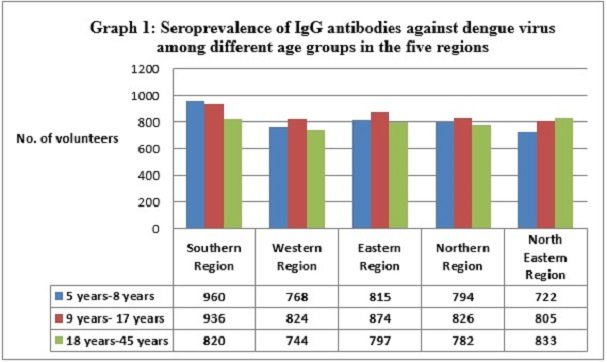
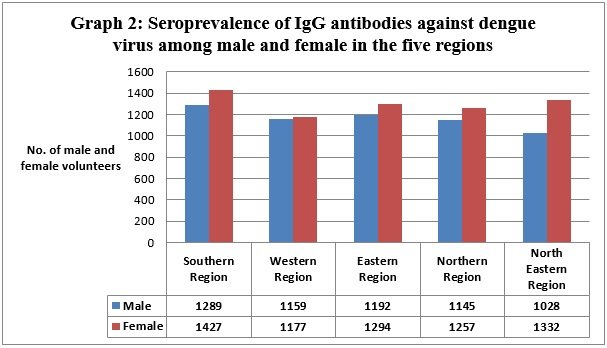
Figure 1 depicts the current distribution of dengue fever in India, as reported by the NVBDCP, i.e., the National Vector Borne Disease Control Programme, under the Ministry of Health and Family Welfare, Government of India.
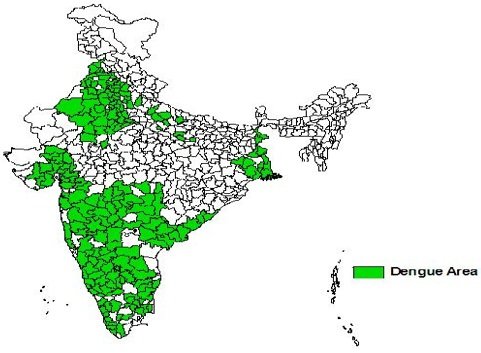
Figure 1: Distribution of dengue/dengue hemorrhagic fever in India
(Source: National Vector Borne Disease Control Programme (NVBDCP), under the Ministry of Health and Family Welfare, Government of India)
According to CNN-News 18, the year 2017 reported the highest number of cases of dengue fever, which was 1.88 lakhs. The mortality cases of dengue fever in India also have gradually decreased since 2010. During the pandemic of COVID-19 in 2020-2021, when the country was in lockdown mode, positive dengue cases were only 39,419, with no report of mortality (Graph 3 and 4).
Scientists believe that a sudden decline in the cases of dengue can be due to the following reasons:
- Lower transmission due to lock down and social distancing
OR - Lack of healthcare resources and under-diagnosis since all healthcare resources such as Hospitals, pathological laboratories, private clinics, nursing homes, healthcare personnel, and the epidemiological monitoring unit have been active in combating the rapid spread of COVID-19 in the country since March 2020.
Source: CNN-News 18
Conclusion
No drug at present can cure dengue. The only vaccine approved by WHO is the Dengvaxia vaccine, available in those areas where dengue is endemic. More studies on the vaccine are carried out in the Asian population. The best management practice is to take necessary precautions, identify the symptoms & get an early diagnosis from a registered physician, follow the doctor’s advice, and have a healthy diet. People should wear full sleeve clothes, apply mosquito repellent cream, use mosquito nets while sleeping, and keep their surroundings clean. Preventing the breeding of the mosquito can reduce the spread of dengue. One can find the symptoms and management practices for dengue from our past articles on dengue fever. Patients are advised not to take any medicine without the supervision of a medical practitioner. The Indian government is carrying out necessary measures to keep a check on dengue fever and COVID-19. A sudden outbreak of dengue fever during COVID-19 can cause a massive burden on India since both the diseases have almost similar symptoms during their early stage. If there is a delay in diagnosis, both diseases can lead to the death of the patient. Thus, it is crucial to understand our responsibilities and take necessary precautions guided by the Indian government to prevent the spread of Dengue and COVID-19.
References
- Dengue. Accessed at
https://nvbdcp.gov.in/index1.php?lang=1&level=1&sublinkid=5776&lid=3690 - Dengue and severe dengue. Accessed at https://www.who.int/news-room/fact-sheets/detail/dengue-and-severe-dengue
- Pandya, G. (2014). Prevalence of Dengue Infection in India. Defence Science Journal. 32. 10.14429/dsj.32.6327.
- Murhekar MV, Kamaraj P, Kumar MS, Khan SA, Allam RR, Barde P, Dwibedi B, Kanungo S, Mohan U, Mohanty SS, Roy S, Sagar V, Savargaonkar D, Tandale BV, Topno RK, Sapkal G, Kumar CPG, Sabarinathan R, Kumar VS, Bitragunta S, Grover GS, Lakshmi PVM, Mishra CM, Sadhukhan P, Sahoo PK, Singh SK, Yadav CP, Bhagat A, Srivastava R, Dinesh ER, Karunakaran T, Govindhasamy C, Rajasekar TD, Jeyakumar A, Suresh A, Augustine D, Kumar PA, Kumar R, Dutta S, Toteja GS, Gupta N, Mehendale SM. Burden of dengue infection in India, 2017: a cross-sectional population based serosurvey. Lancet Glob Health. 2019 Aug;7(8):e1065-e1073. doi: 10.1016/S2214-109X(19)30250-5. Epub 2019 Jun 11. PMID: 31201130.
- Gupta, N., Srivastava, S., Jain, A., & Chaturvedi, U. C. (2012). Dengue in India. The Indian journal of medical research, 136(3), 373–390.
- From 1.88 Lakh to About 40k: Dengue Cases, Deaths in India Down by Nearly 80% since 2017, Shows Data. Accessed at https://www.news18.com/news/india/from-1-88-lakh-to-about-40k-dengue-cases-deaths-in-india-down-by-nearly-80-since-2017-shows-data-3945527.html
- Amid COVID-19, dengue triggers new challenge in India. Accessed at
https://www.aa.com.tr/en/latest-on-coronavirus-outbreak/amid-covid-19-dengue-triggers-new-challenge-in-india/2371613



